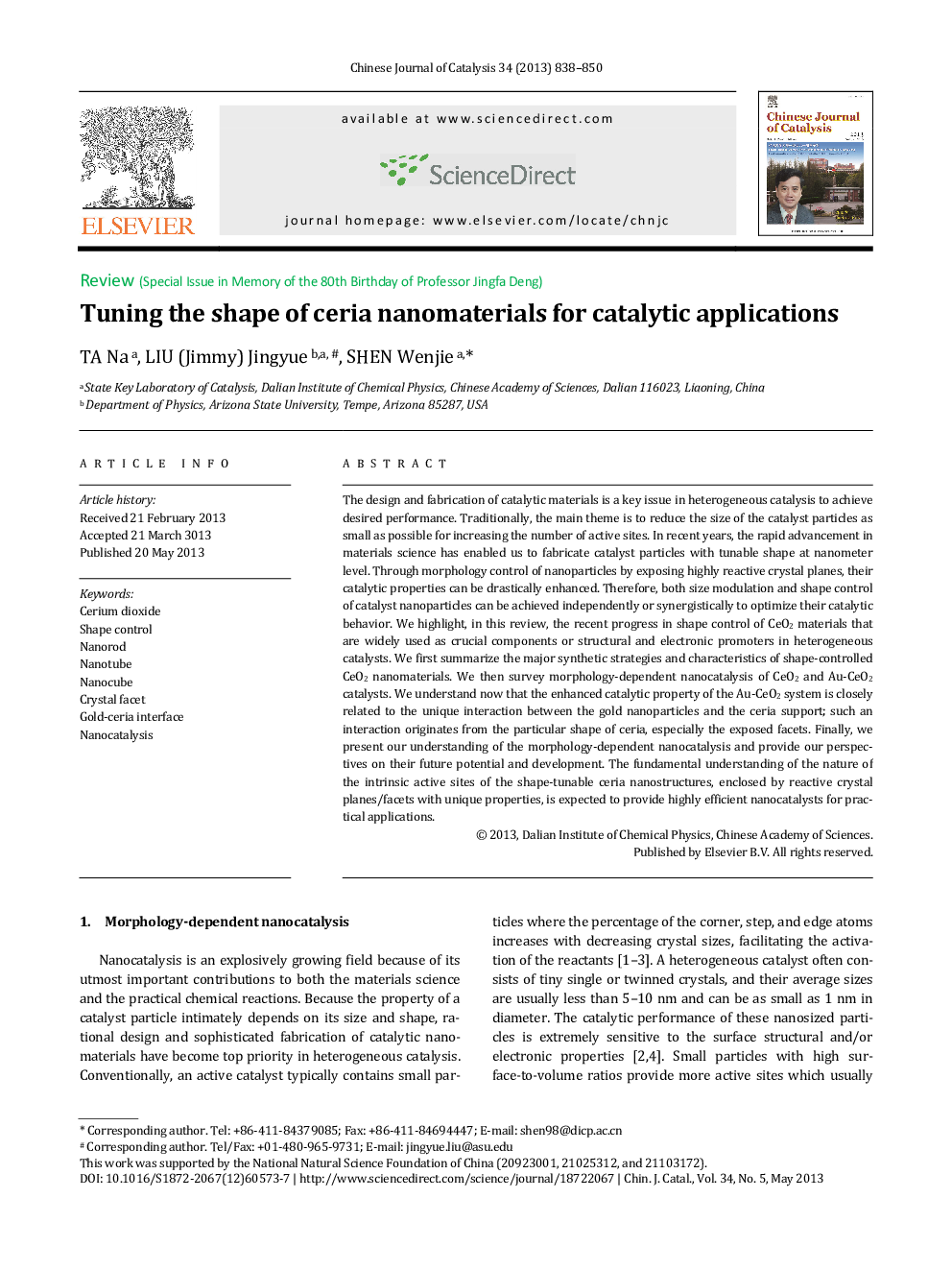| Article ID | Journal | Published Year | Pages | File Type |
|---|---|---|---|---|
| 60153 | Chinese Journal of Catalysis | 2013 | 13 Pages |
The design and fabrication of catalytic materials is a key issue in heterogeneous catalysis to achieve desired performance. Traditionally, the main theme is to reduce the size of the catalyst particles as small as possible for increasing the number of active sites. In recent years, the rapid advancement in materials science has enabled us to fabricate catalyst particles with tunable shape at nanometer level. Through morphology control of nanoparticles by exposing highly reactive crystal planes, their catalytic properties can be drastically enhanced. Therefore, both size modulation and shape control of catalyst nanoparticles can be achieved independently or synergistically to optimize their catalytic behavior. We highlight, in this review, the recent progress in shape control of CeO2 materials that are widely used as crucial components or structural and electronic promoters in heterogeneous catalysts. We first summarize the major synthetic strategies and characteristics of shape-controlled CeO2 nanomaterials. We then survey morphology-dependent nanocatalysis of CeO2 and Au-CeO2 catalysts. We understand now that the enhanced catalytic property of the Au-CeO2 system is closely related to the unique interaction between the gold nanoparticles and the ceria support; such an interaction originates from the particular shape of ceria, especially the exposed facets. Finally, we present our understanding of the morphology-dependent nanocatalysis and provide our perspectives on their future potential and development. The fundamental understanding of the nature of the intrinsic active sites of the shape-tunable ceria nanostructures, enclosed by reactive crystal planes/facets with unique properties, is expected to provide highly efficient nanocatalysts for practical applications.
摘要催化剂的设计、合成和结构调控是获得优异性能的关键. 传统的策略主要是尽量减小催化剂颗粒尺寸以增加活性中心的数目, 即尺寸效应. 近年来, 材料科学的快速发展使得在纳米尺度上调变催化剂的尺寸和形貌成为可能, 特别是通过形貌调控可暴露更多的高活性晶面, 大幅度提高催化性能, 即纳米催化中的形貌效应. 因此, 调节催化剂的尺寸与形貌可以单独或协同优化材料的性能. 氧化铈作为催化剂的重要组分与结构、电子促进剂被广泛应用于多相催化剂体系. 本文总结了近期氧化铈材料形貌可控合成的进展, 包括主要的合成策略和表征方法; 进而分析了氧化铈和金-氧化铈催化材料的形貌效应, 指出金-氧化铈之间独特的相互作用与载体形貌密切相关; 阐述了氧化铈纳米材料因暴露晶面的差异而获得不同催化性能的化学机制.
Graphical AbstractThe catalytic performance of CeO2 materials can be adjusted via tuning their shape at nanometer level by exposing different crystal planes, which influences both reaction pathway and metal-support interaction.Figure optionsDownload full-size imageDownload as PowerPoint slide
